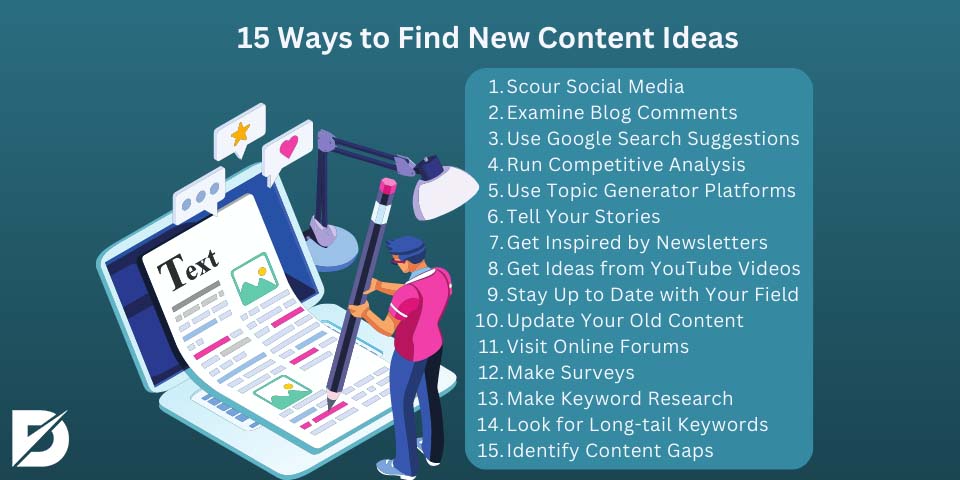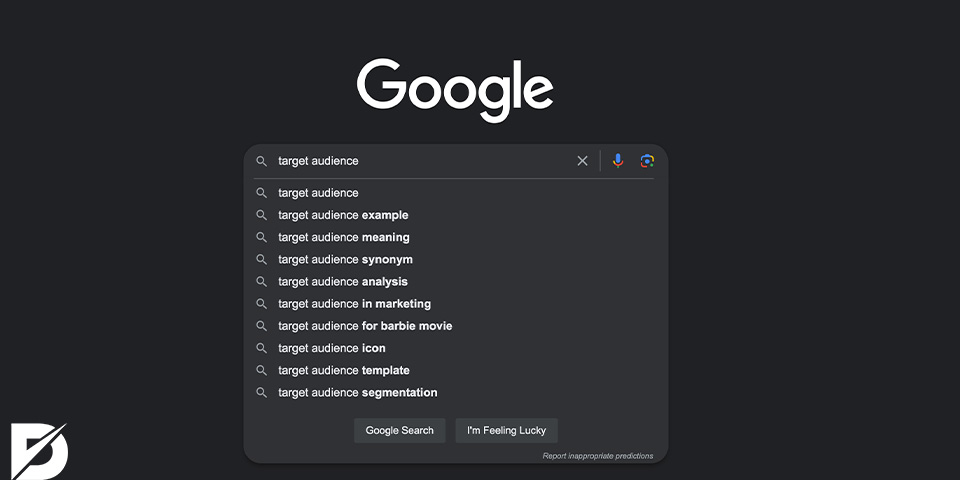Finding new content ideas is one of the most frequently researched topics for website owners. With millions of websites catering to diverse audiences, standing out requires fresh and unique content. Creating new topics can be challenging due to the vast number of articles already published, but it’s essential for attracting clicks and engagement. Websites that present innovative ideas or content from fresh perspectives often capture more attention.
One critical aspect of content creation is identifying the most searched keywords on the internet. While these keywords help boost visibility, simply relying on them isn’t enough. To stand out, you need to create original content using these keywords. Even well-optimized content can struggle to gain traction if it’s too similar to existing articles.
How Do I Find New and High-Quality Titles?
Finding new, high-quality content ideas requires time, research, and creativity. Although two articles may share the same title, the one offering unique insights or covering a trending topic has a higher chance of standing out. The key is balancing searchability with originality.
Rather than focusing solely on existing content, creators can develop their own ideas based on the most researched keywords in their niche. For example, if health-related content is your focus and keywords like “COVID-19” are trending, writing about basic topics like “What is COVID-19?” won’t stand out. Instead, dive deeper into more specific angles or emerging trends related to the topic.
More Points to Consider
Creating content around trending topics is a common strategy, but it can be risky. Unless you can provide unique information or insights, your article may get lost among hundreds of similar ones. For instance, if you’re writing about a popular topic like the COVID-19 vaccine, ensure your content offers something different, such as the latest developments or niche perspectives.
Alternatively, focus on everyday, practical topics that relate to your audience. If your website covers food, for instance, instead of writing a generic article on “how to make baklava,” you could explore “baklava varieties popular in recent years.” This not only addresses a trending topic but offers a fresh take that is more likely to rank.
15 Ways to Find New Content Ideas
From exploring social media landscapes to crafting personalized narratives, from harnessing the power of keyword research to leveraging the insights of online forums, each of these strategies holds the potential to be a wellspring of inspiration. Here are the 15 to find new content ideas;
- Scour Social Media
- Examine Blog Comments
- Use Google Search Suggestions
- Run Competitive Analysis
- Use Topic Generator Platforms
- Tell Your Stories
- Get Inspired by Newsletters
- Get Ideas from YouTube Videos
- Stay Up to Date with Your Field
- Update Your Old Content
- Visit Online Forums
- Make Surveys
- Make Keyword Research
- Look for Long-tail Keywords
- Identify Content Gaps

Scour Social Media
Social media platforms like Twitter, Facebook, and LinkedIn are valuable tools for discovering trending conversations and topics. By following influencers and using hashtags, you can gain insights into emerging discussions and pinpoint what content your audience is engaging with. Comments and user interactions also reveal content gaps you can address.
Examine Blog Comments
Comments on your blog or other relevant blogs offer a wealth of ideas. Readers often ask questions or express their opinions, giving you a direct insight into their interests. Look for recurring questions or debates, as these can spark ideas for content that addresses user concerns.
Use Google Search Suggestions
Google’s autocomplete feature gives you a real-time look into what people are searching for. Start by typing a keyword into Google, and review the suggested searches for content inspiration. These suggestions reflect common queries, helping you create content that matches your audience’s interests.

Run Competitive Analysis
Competitive analysis involves gazing beyond your digital realm and exploring the territories that others have conquered. It’s a deliberate effort to understand the strategies, content offerings, and audience interactions that have propelled your competitors to the forefront. In this expansive vista of exploration, you’re not seeking to replicate but to glean insights that will inform your unique approach.

Studying your competitors’ content can help you identify successful strategies and gaps in their offerings. Look at the themes and topics they cover and how their audience responds. Use this information to develop content with a unique twist. Tools like Dopinger’s SEO Competitor Analysis tool can assist with this process.
Use Topic Generator Platforms
Online tools like HubSpot’s Blog Ideas Generator provide a quick way to brainstorm new content ideas. By entering a few keywords, these platforms generate potential headlines or angles, giving you a fresh perspective on familiar topics.
Tell Your Stories
Personal experiences are a powerful content tool. Sharing stories about your journey, challenges, or successes adds a human touch to your content and can resonate strongly with your audience. People love content that feels personal and relatable.
Get Inspired by Newsletters
Industry newsletters are a great way to stay updated on the latest trends and developments in your field. Subscribing to a few relevant newsletters can give you a steady stream of content ideas.
Get Ideas from YouTube Videos
YouTube is a goldmine for content inspiration. Review comments on videos in your niche to discover what questions people are asking. These insights can lead to new content ideas or help you expand on popular discussions.
Stay Up to Date with Your Field
As a content creator, your journey is intertwined with the perpetual flow of advancements, trends, and insights in your field. The ninth strategy for uncovering new content ideas invites you to embark on a voyage of perpetual learning. This journey enriches your content and positions you as a trusted source of up-to-the-minute knowledge.
Within the folds of ongoing research, studies, and reports lie hidden insights waiting to be unearthed. By staying current, you access a wealth of data and findings that can be translated into compelling content. Whether it’s statistics, case studies, or breakthrough discoveries, these insights amplify the value of your content.
Update Your Old Content
Updating your old content is a testament to your commitment to timeless relevance and the evergreen value you bring to your audience. Old content isn’t obsolete; it’s a repository of evergreen wisdom. Concepts that held relevance when you first crafted them often retain their significance over time. By revisiting and updating this content, you reinforce its value and ensure that it continues to serve as a reliable resource for your audience. What was true yesterday may have transformed today. When you update your old content, you align it with the current state of knowledge. This enhances its accuracy and demonstrates your commitment to delivering accurate, up-to-date insights.
Visit Online Forums
Online forums and communities are hubs of discussions and queries about specific topics. Platforms like Reddit, Quora, and specialized industry forums are excellent sources of new content ideas. Look for recurring questions, problems, or debates and create content that provides solutions or insights.
Make Surveys
Directly engaging with your audience through surveys can yield valuable insights and generate new content ideas. Create surveys to understand their pain points, interests, and preferences. The responses can guide you in tailoring your content to meet their needs.
Make Keyword Research
Keyword research, often likened to the art of deciphering a map to hidden treasures, is the cornerstone of your quest for new content ideas. Keywords are the compass points that guide digital explorers to their desired destinations. They represent the intentions, questions, and curiosities of online users. By immersing yourself in keyword research, you step into your audience’s shoes, understanding not only what they’re searching for but also the nuances of how they express their queries. You can follow a keyword research checklist for your content.
Look for Long-Tail Keywords
While broad keywords are important, long-tail keywords can uncover specific queries and needs of your audience. These longer and more specific phrases can be a goldmine of new content ideas. Identifying long-tail keywords can attract highly targeted traffic to your platform.
Identify Content Gaps
Conduct a thorough analysis of your content and identify areas that haven’t been adequately covered. These content gaps represent opportunities for creating new content ideas that cater to unmet needs within your niche. Comprehensive coverage on overlooked topics can set you apart as a valuable resource.
Conclusion On Finding New Content Ideas
Finding new content ideas requires creativity, research, and an understanding of your audience. By leveraging social media, keyword research, and tools like topic generators, you can generate unique and valuable content that resonates with your readers. Always keep your audience in mind, and continually update and refresh your content to maintain its relevance.
Frequently Asked Questions About
There are many ways you can take advantage of finding new content ideas. However, it would be best to act following the target audience. However, people who are blog writers can research keyword research and social media.
Content ideas are everywhere. If people research more, ask more, and spend more time, it will create the highest quality content.
It is essential that the subject you choose appeals to your target audience and is included in keyword research. Also, choosing the content your target audience desires is a point that will benefit you more. People can submit their content ideas to vote on social media channels.
It emerges with what the person thinks about the target audience. For example, users who want to create a strong topic should not separate their preferences from the general topic of the site. While creating the subject, one should not be dependent on one source; many sources should be evaluated simultaneously.
Users who want to generate content ideas must first act by their target audience, then keyword research, and finally, content marketing. Using all three and not leaving the site topic will bring people forward.





No comments to show.